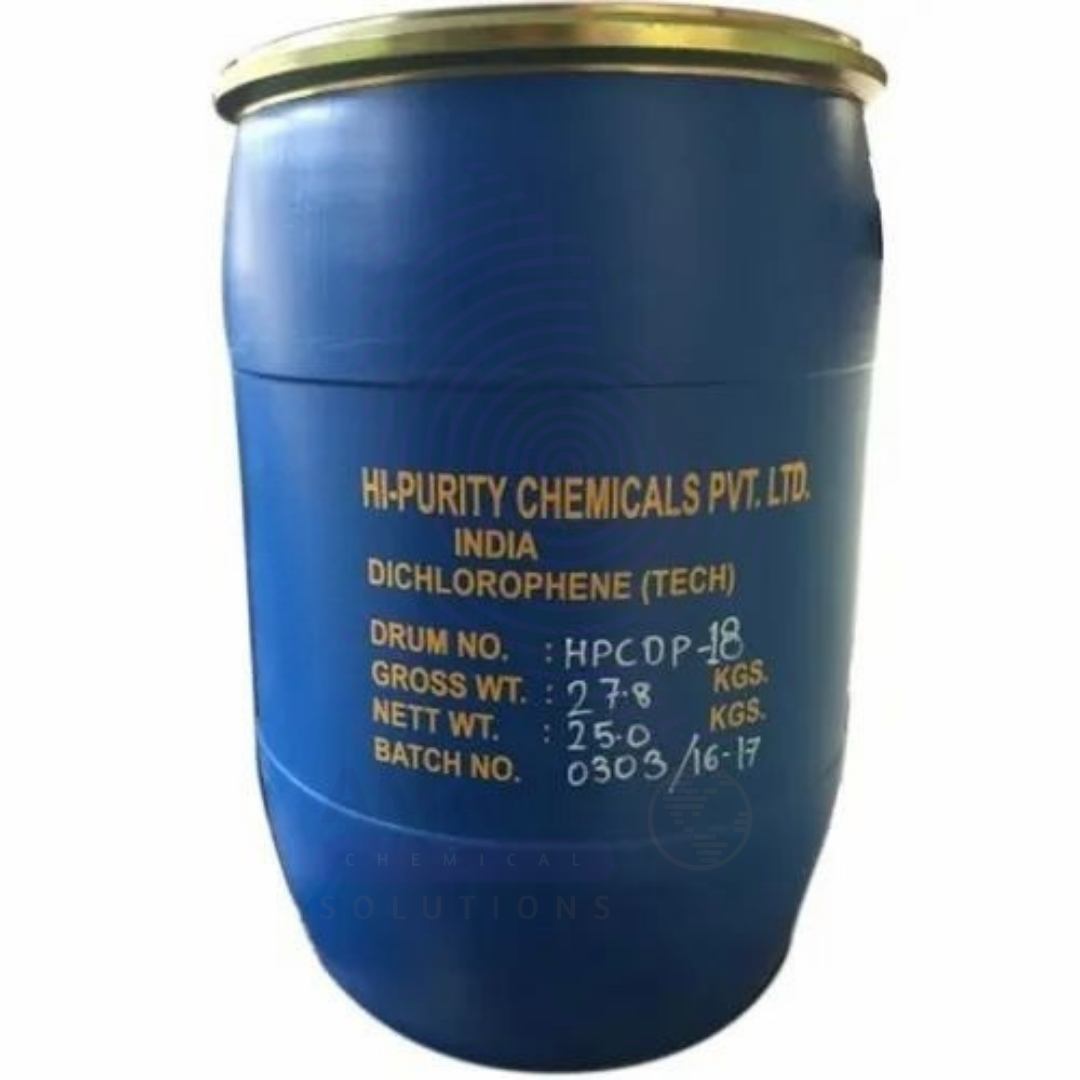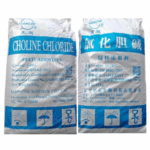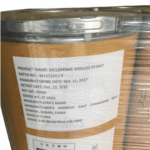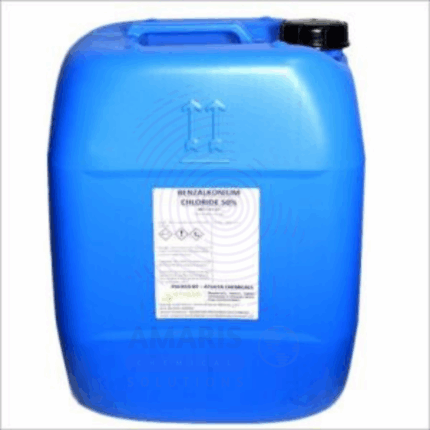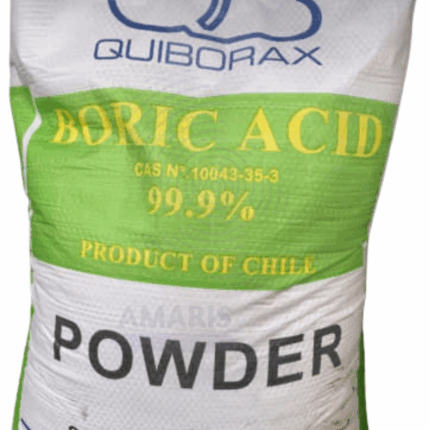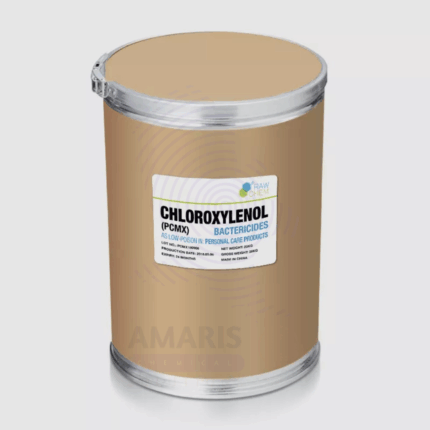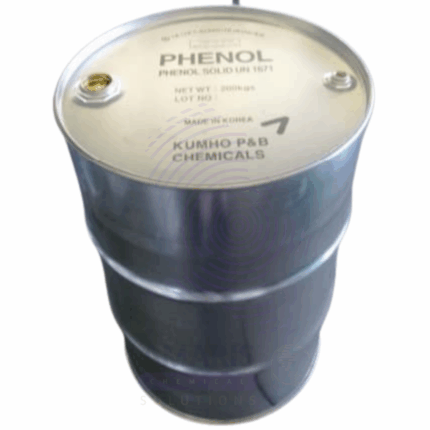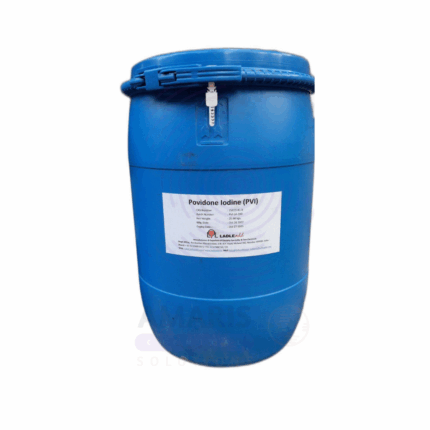Dichlorophene Technical
Whatsapp Order
Dichlorophene Technical (also known as 2,2′-Methylenebis(4-chlorophenol)) is a chlorinated phenolic compound used primarily as an antimicrobial agent and disinfectant. It appears as a white to pale yellow crystalline powder with a characteristic phenolic odor. Known for its potent bactericidal and fungicidal properties, Dichlorophene is widely used in pharmaceutical formulations, personal care products, and industrial disinfectants. The “Technical” grade refers to its industrial or bulk purity form used as a raw material in manufacturing.
Description
Table of Contents
Toggle
Dichlorophene Technical
Primary Uses
- Pharmaceuticals & Personal Care
- Antimicrobial Agent: Used in medicated soaps, antiseptic creams, and lotions to control bacteria and fungi on the skin.
- Scabicides and Pediculicides: Acts against parasites such as lice and scabies mites in topical treatments.
- Acne Treatments: Employed in formulations targeting acne due to its antibacterial activity.
- Disinfectants & Sanitizers
- Surface Disinfectant: Used in hospitals, clinics, and food processing plants for disinfecting surfaces.
- Water Treatment: Occasionally employed as a biocide in water treatment to control microbial growth.
- Industrial Applications
- Preservative in Industrial Products: Prevents microbial degradation in paints, coatings, and adhesives.
- Agricultural Uses: Incorporated in pesticide formulations for antifungal and antibacterial effects on crops.
Secondary Uses
- Veterinary Medicine
- Used in topical antiseptic products for animals to prevent infections.
- Cosmetics
- Included in certain cosmetic formulations as a preservative or antimicrobial additive (restricted in some regions due to toxicity concerns).
- Research & Laboratory
- Utilized in microbiological studies as a standard antimicrobial agent.
KEY PRODUCT FEATURES
1. Basic Identification Attributes
- Chemical Name (IUPAC): 2,2'-Methylenebis(4-chlorophenol)
- Common/Trade Name: Dichlorophene Technical
- CAS Number: 97-23-4
- HS Code: 2907.29.00
- Molecular Formula: C13H8Cl2O2
- Synonyms:
- Dichlorophene
- Chlorophen
- 2,2’-Methylenebis(4-chlorophenol)
2. Physical & Chemical Properties
- Physical State: White to pale yellow crystalline powder
- Odor: Phenolic, medicinal
- Melting Point: Approximately 132–135°C
- Solubility: Slightly soluble in water; soluble in organic solvents like ethanol and acetone
- Stability: Stable under normal conditions; decomposes on heating to release toxic fumes
3. Safety & Hazard Attributes
- Hazard Class (GHS): Toxic, irritant, hazardous to aquatic life
- Toxicity: Moderate acute toxicity; harmful if swallowed, inhaled, or in contact with skin
- Exposure Limits: No widely established occupational limits, handle with caution
- Reactivity: Stable; incompatible with strong oxidizers
4. Storage & Handling Attributes
- Storage Conditions: Store in a cool, dry, well-ventilated area away from heat and ignition sources
- Container Type: Sealed drums or containers made of corrosion-resistant materials
- Shelf Life: Typically 2 years if stored properly
- Handling Precautions: Use PPE to avoid inhalation, skin and eye contact
5. Regulatory & Compliance Attributes
- Regulatory Status: Restricted or regulated in some regions for consumer use due to toxicity
- Transportation: Classified as hazardous material; follow applicable regulations
- Environmental Compliance: Handle and dispose of as hazardous waste
6. Environmental & Health Impact
- Ecotoxicity: Toxic to aquatic organisms; avoid environmental release
- Persistence: May persist in the environment due to low biodegradability
- Bioaccumulation: Potential for bioaccumulation in aquatic organisms
- Carcinogenicity/Mutagenicity: Not classified as carcinogenic but can cause skin sensitization and irritation
SAFETY HANDLING PRECAUTIONS
Safety Handling Precautions
- PPE Required:
- Chemical-resistant gloves
- Safety goggles or face shield
- Respirator if dust or fumes are generated
- Protective clothing
- Handling Guidelines:
- Avoid dust generation and inhalation
- Use in well-ventilated areas or fume hoods
- Storage Measures:
- Keep containers tightly closed
- Store away from incompatible substances like strong oxidizers
First Aid Measures
- Inhalation: Move to fresh air immediately; seek medical attention if symptoms develop
- Skin Contact: Wash thoroughly with soap and water; seek medical advice if irritation persists
- Eye Contact: Rinse eyes with plenty of water for at least 15 minutes; get medical help
- Ingestion: Do not induce vomiting; seek urgent medical attention
Firefighting Measures
- Fire Hazards: Combustible; emits toxic fumes on decomposition
- Extinguishing Media: Use water spray, foam, dry chemical, or CO₂
- Special Precautions: Wear full protective gear and self-contained breathing apparatus
- Decomposition Products: Hydrogen chloride, chlorine, carbon monoxide, and other toxic gases
Related products
Benzyl Konium Chloride
Benzyl Konium Chloride (BAC) 50% is a quaternary ammonium compound with potent antimicrobial and disinfectant properties. It is a cationic surfactant widely used for its bactericidal, fungicidal, and virucidal effects. This clear to pale yellow liquid concentrate is highly soluble in water and is commonly used in healthcare, sanitation, and industrial hygiene applications. BAC 50% solutions serve as active ingredients in disinfectants, sanitizers, and antiseptics due to their effectiveness against a broad spectrum of microorganisms.
Boric Acid
Boric Acid, chemically known as hydrogen borate or boracic acid, is a weak, monobasic Lewis acid of boron. It appears as a white, crystalline powder or granules that are odorless and slightly soluble in water. Boric Acid is commonly used in antiseptics, insecticides, flame retardants, and as a buffering agent in various industrial and pharmaceutical applications. Due to its mild antiseptic and antifungal properties, it is often used in ophthalmic, dermatologic, and other personal care formulations. It also plays a key role in glass and ceramics manufacturing as well as in agriculture.
Chloroxylenol BP
Chloroxylenol BP is a pale yellow to colorless crystalline solid with a mild phenolic odor. It is a broad-spectrum antimicrobial agent widely used for its bactericidal, fungicidal, and antiviral properties. Chemically known as 4-chloro-3,5-dimethylphenol, Chloroxylenol acts by disrupting microbial cell membranes and inhibiting enzyme systems, making it effective against many gram-positive and some gram-negative bacteria, fungi, and viruses. Its relatively low toxicity and skin irritation profile compared to other phenols have made it a preferred active ingredient in antiseptics, disinfectants, and preservative formulations across pharmaceutical, personal care, household, and industrial applications.
Gentian Violet Crystals
Gentian Violet Crystals is a dark purple crystalline powder known chemically as Hexamethyl pararosaniline chloride. It is a synthetic triphenylmethane dye historically used for its antimicrobial, antifungal, and antiseptic properties. The “80” typically refers to the dye strength or concentration. Gentian Violet exhibits broad-spectrum antimicrobial activity and is used in medical, veterinary, microbiological, histological, cosmetic, and industrial applications. It functions by disrupting bacterial and fungal cell membranes and inhibiting DNA replication. Despite reduced use in some areas due to safety concerns, it remains valuable in certain low-cost, traditional, and veterinary applications.
Phenol Ice Crystals
Phenol Ice Crystals, also known as carbolic acid in solid form, are crystalline compounds of phenol with a melting point near room temperature, giving them an “ice-like” appearance. Phenol is a aromatic organic compound widely used as a precursor in chemical synthesis, disinfectants, and pharmaceuticals. It exhibits antiseptic, antiseptic, and solvent properties. Due to its toxicity and corrosiveness, phenol requires careful handling.
Povidone Iodide BP
Povidone Iodide BP is a water-soluble complex of iodine with the synthetic polymer polyvinylpyrrolidone (PVP). It acts as a broad-spectrum antiseptic effective against bacteria, fungi, viruses, and protozoa. Widely used in medical, pharmaceutical, and veterinary fields, Povidone Iodine provides sustained iodine release, minimizing irritation while offering rapid antimicrobial action. It is essential for wound care, surgical preparation, and infection control.
Sodium Thiosulphate Pentahydrate
Sodium Thiosulphate Pentahydrate (Na₂S₂O₃·5H₂O) is a white crystalline solid that is highly soluble in water. It is commonly used as a photographic fixer, reducing agent, and in water treatment processes. This 25kg packaged product contains five molecules of water of crystallization, which makes it more stable and easier to handle in industrial and laboratory applications. It is widely used to dechlorinate water, remove heavy metals, and in analytical chemistry for iodometric titrations.
Tricide 30E
Tricide 30E is a versatile emulsifiable concentrate formulation primarily used as a broad-spectrum biocide. It is designed to control bacterial, fungal, and algal growth in industrial water treatment, cooling towers, paper mills, and oilfield applications. The product combines potent antimicrobial agents to effectively inhibit microbial contamination, biofilm formation, and corrosion, thereby enhancing system efficiency and longevity. Tricide 30E is favored for its ease of use, stability in diverse water chemistries, and strong efficacy against a wide range of microorganisms.


 Preservatives(food)
Preservatives(food) Flavor Enhancers
Flavor Enhancers Acidulants
Acidulants Sweeteners
Sweeteners Antioxidants
Antioxidants Colorants(food)
Colorants(food) Nutraceutical Ingredients (food)
Nutraceutical Ingredients (food) Nutrient Supplements
Nutrient Supplements Emulsifiers
Emulsifiers
 Collectors
Collectors Dust Suppressants
Dust Suppressants Explosives and Blasting Agents
Explosives and Blasting Agents Flocculants and Coagulants
Flocculants and Coagulants Frothers
Frothers Leaching Agents
Leaching Agents pH Modifiers
pH Modifiers Precious Metal Extraction Agents
Precious Metal Extraction Agents
 Antioxidants(plastic)
Antioxidants(plastic) Colorants (Pigments, Dyes)
Colorants (Pigments, Dyes) Fillers and Reinforcements
Fillers and Reinforcements Flame Retardants
Flame Retardants Monomers
Monomers Plasticizers
Plasticizers Polymerization Initiators
Polymerization Initiators Stabilizers (UV, Heat)
Stabilizers (UV, Heat)
 Antifoaming Agents
Antifoaming Agents Chelating Agents
Chelating Agents Coagulants and Flocculants
Coagulants and Flocculants Corrosion Inhibitors
Corrosion Inhibitors Disinfectants and Biocides
Disinfectants and Biocides Oxidizing Agents
Oxidizing Agents pH Adjusters
pH Adjusters Scale Inhibitors( water)
Scale Inhibitors( water)
 Antioxidants(cosmetic)
Antioxidants(cosmetic) Emollients
Emollients Fragrances and Essential Oils
Fragrances and Essential Oils Humectants
Humectants Preservatives
Preservatives Surfactants(cosmetic)
Surfactants(cosmetic) Thickeners
Thickeners UV Filters
UV Filters
 Fertilizers
Fertilizers Soil Conditioners
Soil Conditioners Plant Growth Regulators
Plant Growth Regulators Animal Feed Additives
Animal Feed Additives Biostimulants
Biostimulants Pesticides (Herbicides, Insecticides, Fungicides)
Pesticides (Herbicides, Insecticides, Fungicides)
 Active Pharmaceutical Ingredients (APIs)
Active Pharmaceutical Ingredients (APIs) Excipients
Excipients Solvents(pharmaceutical)
Solvents(pharmaceutical) Antibiotics
Antibiotics Antiseptics and Disinfectants
Antiseptics and Disinfectants Vaccine Adjuvants
Vaccine Adjuvants Nutraceutical Ingredients (pharmaceutical)
Nutraceutical Ingredients (pharmaceutical) Analgesics & Antipyretics
Analgesics & Antipyretics
 Analytical Reagents
Analytical Reagents Solvents(lab)
Solvents(lab) Chromatography Chemicals
Chromatography Chemicals Spectroscopy Reagents
Spectroscopy Reagents microbiology-and-cell-culture-reagents
microbiology-and-cell-culture-reagents Molecular Biology Reagents
Molecular Biology Reagents Biochemical Reagents
Biochemical Reagents Inorganic and Organic Standards
Inorganic and Organic Standards Laboratory Safety Chemicals
Laboratory Safety Chemicals Specialty Laboratory Chemicals(Special Laboratory Equipment)
Specialty Laboratory Chemicals(Special Laboratory Equipment)
 Demulsifiers
Demulsifiers Hydraulic Fracturing Fluids
Hydraulic Fracturing Fluids Scale Inhibitors(oil)
Scale Inhibitors(oil) Surfactants(oil)
Surfactants(oil) Drilling Fluids
Drilling Fluids
 Dyes and Pigments
Dyes and Pigments Bleaching Agents
Bleaching Agents Softening Agents
Softening Agents Finishing Agents
Finishing Agents Antistatic Agents
Antistatic Agents
 Admixtures
Admixtures Waterproofing Agents
Waterproofing Agents Sealants and Adhesives
Sealants and Adhesives Curing Compounds
Curing Compounds Concrete Repair Chemicals
Concrete Repair Chemicals Anti-Corrosion Coatings
Anti-Corrosion Coatings
 Surfactants(cleaning)
Surfactants(cleaning) Builders
Builders Enzymes
Enzymes Solvents (Cleaning)
Solvents (Cleaning) Fragrances
Fragrances
 Electronic Chemicals
Electronic Chemicals Catalysts
Catalysts Lubricants
Lubricants Photographic Chemicals
Photographic Chemicals Refrigerants
Refrigerants Automotive chemicals
Automotive chemicals Pyrotechnic Chemicals
Pyrotechnic Chemicals
 Biodegradable Surfactants
Biodegradable Surfactants Bio-based Solvents
Bio-based Solvents Renewable Polymers
Renewable Polymers Carbon Capture Chemicals
Carbon Capture Chemicals Wastewater Treatment Chemicals
Wastewater Treatment Chemicals
 Pigments
Pigments Solvents(paint)
Solvents(paint) Specialty Coatings
Specialty Coatings Binders/Resins
Binders/Resins Additives
Additives Driers
Driers Anti-Corrosion Agents
Anti-Corrosion Agents Functional Coatings
Functional Coatings Application-Specific Coatings
Application-Specific Coatings
 Fresh Herbs
Fresh Herbs Ground Spices
Ground Spices Whole Spices
Whole Spices Spice Blends
Spice Blends Dried Herbs
Dried Herbs
 Leavening Agents
Leavening Agents Dough Conditioners
Dough Conditioners Flour Treatments
Flour Treatments Fat Replacers
Fat Replacers Decoratives
Decoratives Preservatives(baking)
Preservatives(baking)
 Plasticizers & Softeners
Plasticizers & Softeners Reinforcing Agents
Reinforcing Agents Adhesion Promoters
Adhesion Promoters Vulcanizing Agents
Vulcanizing Agents Antidegradants
Antidegradants Blowing Agents
Blowing Agents Fillers & Extenders
Fillers & Extenders Accelerators & Retarders
Accelerators & Retarders